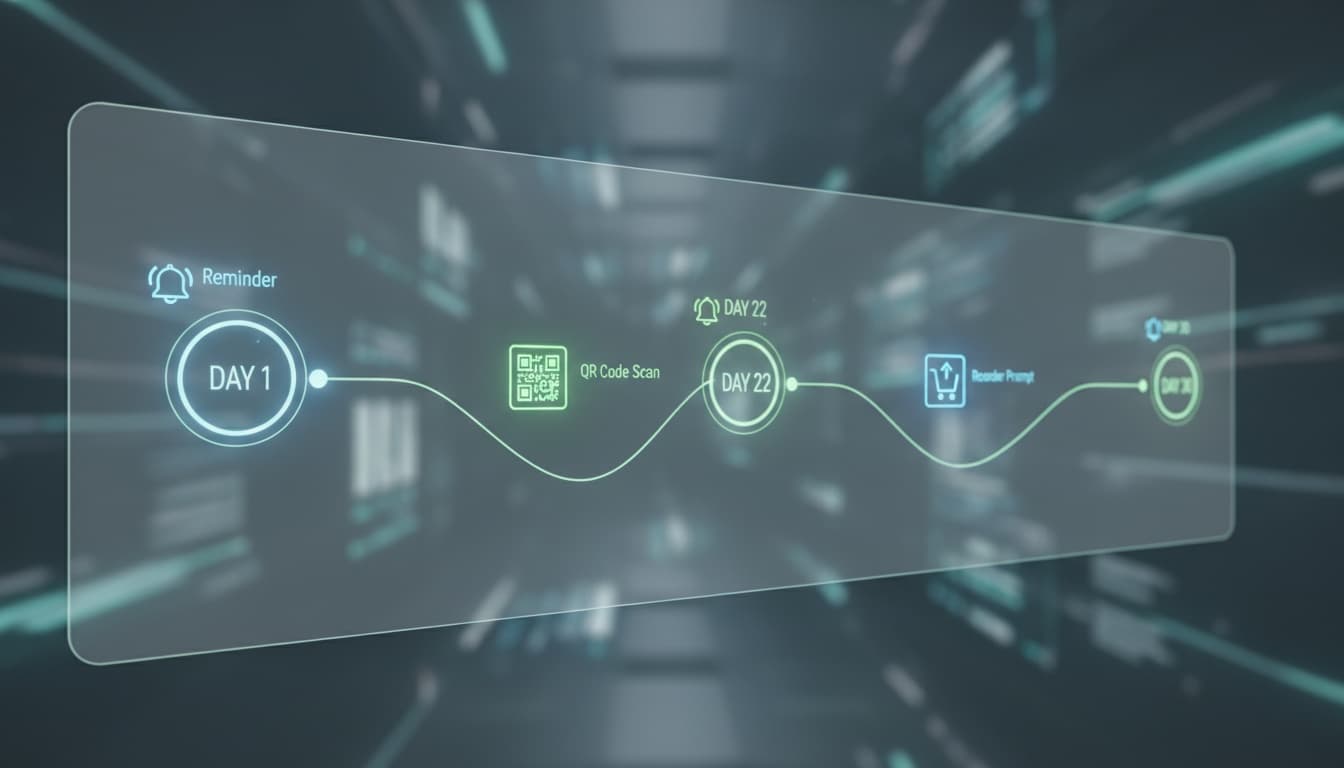Repeat purchases are the foundation of sustainable e-commerce growth. Acquisition is expensive, competition is aggressive, and customers have endless alternatives. The brands that scale consistently are the ones that turn first time buyers into returning buyers. To make customers buy again you need psychology, timing, personalized communication, well designed replenishment cycles, smart cross sell and upsell flows, and post purchase experiences that pull customers back into the brand instead of letting them drift away.
This guide shows practical tactics to make customers buy again, including timing triggers, reminders, wishlist reactivation, review incentives, QR codes on delivered packages that unlock exclusive offers, and clear communication scripts for your emails, SMS messages, and inserts. Every tactic is built to increase frequency and lifetime value while avoiding pushy or generic interactions.
Turn one time buyers into repeat customers
Use QR triggered offers, reminders, and product journeys to bring customers back to your store consistently.
Why repeat purchases matter in e-commerce
Repeat purchases increase revenue without increasing acquisition costs. They stabilize cash flow, extend customer lifetime value, and reduce dependence on paid traffic. A customer who buys twice is far more likely to buy a third time. Customers who reach a third purchase are significantly more likely to stay for a fourth, fifth, or tenth order.
Retention also reduces volatility. When your brand relies solely on new visitors you are constantly at the mercy of auction based ad platforms. When you have strong repeat purchase behavior you can grow without burning budget on acquisition every week. This is why many of the fastest growing brands focus on product experience and post purchase journeys rather than only top of funnel channels.
To make customers buy again you must understand the psychology behind repeat purchases. Customers reorder when they feel satisfied, when they remember your brand at the right moment, when they see relevant offers, and when the next step feels easy and natural.
Retention psychology: what makes customers return
Repeat purchases happen when three psychological conditions are met. First, the product must deliver a positive outcome. Second, the customer must feel connected to the brand. Third, there must be a reason or trigger to return. These conditions create familiarity, trust, and ease of decision making.
Positive reinforcement also plays a major role. When customers receive rewards, exclusive content, or personalized recommendations they associate your brand with value. This builds emotional loyalty instead of purely transactional relationships. If your communication is inconsistent or irrelevant customers will forget your brand quickly and reorder from a competitor.
Psychology research shows that people are more likely to repeat actions that feel frictionless. Reduce steps, automate reminders, and use clear calls to action. Create loops that encourage discovery, reordering, or usage based recommendations.
Timing triggers that activate the next purchase
Timing triggers tell you exactly when to reach out. These are behavioral or product based signals that indicate when a customer is ready for a new order. Without timing triggers your communication becomes random and inefficient. With timing triggers your messages feel natural and helpful.
For replenishable products you should estimate consumption cycles. A customer who buys a thirty day supply of supplements should receive a reorder reminder around day twenty two. A customer who buys skincare may need a reminder after four to six weeks. A pet food order might require a reminder sooner depending on the size and usage.
Combine timing triggers with QR powered packaging using VISU retail solutions. A QR code on the box can trigger a time based sequence when scanned, so customers receive helpful reminders without needing to subscribe or create friction.

Replenishment cycles that reduce friction
Replenishment is one of the strongest repeat purchase drivers. Customers reorder more often when the brand clearly communicates how long the product lasts and when the customer should expect to run out. Many brands avoid this because they fear irritating customers, but transparency builds trust.
Use visual charts on your site and inserts inside packages to show usage cycles. Provide simple calculators or guides such as this product lasts thirty days when used twice daily. These reduce cognitive load and make the next purchase feel like the natural next step instead of a forced sale.
QR codes inside the packaging can accelerate reorders. When customers scan the code they should land on a one click reorder page with personalized upsell suggestions. This reduces friction and increases the chance that customers buy again within the right time window.
Personalized reminders and lifecycle messages
Reminders work best when personalized. Generic follow up emails often get ignored. Personalized reminders based on purchase history, category, and timing feel more relevant. Use segments such as new customers, replenishment customers, and high value customers. Tailor your messaging to each group.
For example, new customers might receive a message such as your first order usually lasts around four weeks. Would you like to reorder or see complementary items? Repeat customers might receive a gentle suggestion such as it looks like you may be running low. Reorder in one click and save time.
Use SMS or push notifications for urgent reminders such as items that run out frequently. But keep your tone helpful, not pushy. Make sure your call to action is clear and visible. When possible redirect customers to a personalized page that includes their preferred items and recently viewed products.
Wishlist reactivation and abandoned interest
Wishlists are strong signals of intent. Customers save products because they like them but are not ready to purchase yet. Reactivating this interest is one of the easiest ways to generate repeat orders without discounts.
Send reminders like the item from your wishlist is back in stock or the product you saved last month is now available in your color. These messages work because they are tied to genuine customer interest rather than generic promotions.
Combine wishlist reminders with small perks or QR based missions. For example, scanning a QR code inside the latest shipment could unlock a reward that applies only to wishlist items. This creates a bridge between past interest and new behavior.
Cross sell tactics that feel helpful, not pushy
Cross sell works when it feels contextual. Customers respond to offers that naturally complement their original purchase. Suggest accessories, refills, compatible items, or upgrades based on what they already bought. Avoid unrelated recommendations that feel random or aggressive.
To improve relevance, build bundles that solve real problems. For example, a skincare brand might offer a hydration bundle after a customer buys a face cleanser. A coffee brand might offer a grinder or reusable filters after a customer buys bags of beans. A fashion brand might offer matching items from the same collection.
Cross sell performs even better when triggered by QR scans. The QR code on your packaging can open a personalized suggestion page that shows complementary items. This experience feels more natural than emails alone because it appears when customers are already using and enjoying the product.
Upsell strategies that increase order value and frequency
Upsell is effective when it shifts customers toward more valuable versions of the products they already love. Offer larger sizes, premium versions, higher value bundles, or subscription options. Customers are more likely to accept upsells when they trust your brand and have already had a positive experience.
Use upsell opportunities strategically at checkout, during reorder flows, or inside post purchase emails. For premium categories, offer comparison charts that show what additional value customers get at the higher tier. Make the benefits clear and tangible.
You can also upsell based on timing triggers. If a customer reorders frequently, encourage them to switch to a subscription or larger quantity to save time and money. This improves both lifetime value and customer convenience.
Review incentives that encourage engagement
Reviews play an important role in repeat purchase behavior. When customers write reviews they reinforce positive feelings about the product. Review incentives work well when they reward engagement rather than buying reviews. Offer points, exclusive content, or early access for leaving a review.
You can combine review incentives with QR scans. Include a QR code inside the package that opens the review page with one tap. Reward customers with a small amount of points or unlock a mission when they complete the review. This creates engagement loops that keep customers connected to your brand.
These incentives must stay transparent and ethical. Never ask for positive reviews. Instead encourage honest feedback and reward the action, not the rating.
QR codes that unlock exclusive offers on delivered packages
QR codes turn packaging into a sales channel. When customers receive their delivery, they are in a positive state of mind. This is the perfect moment to show them an exclusive offer. A QR code on the box or thank you card can open a page with a personalized reward, upsell suggestion, or limited time offer.
Exclusive QR offers work because they connect physical excitement with digital action. Customers already opened the package and enjoyed the product. The QR code gives them a reason to continue the journey. These offers can include bonus points, limited bundles, or time sensitive discounts that encourage customers to return.
Use systems like VISU QR Ads to create dynamic QR offers that update based on customer behavior. Each scan can show a different reward depending on purchase history, tier status, or time since last order.

Practical scripts for repeat purchase communication
Here are simple scripts you can adapt for email, SMS, or push notifications. Keep them short, clear, and helpful. Emphasize convenience and value.
Email script for replenishment
Subject: You may be running low
Hi [Name], based on your last order your product usually lasts around [X] days. If you want to restock early you can reorder in one click below. We also added a personalized recommendation based on what other customers like you love.
SMS script for time sensitive items
Hi [Name], quick reminder that your [product] may be running out soon. Reorder now and unlock a small bonus when you scan the QR code on your next delivery.
Wishlist reactivation script
Hi [Name], the item you saved last month is back in stock in your size. Want us to hold it for you for twenty four hours?
QR offer script inside packaging
Thanks for your order. Scan the QR code on your box to unlock a thank you reward and a personalized suggestion for your next purchase.
How all these tactics work together
Repeat purchases happen when product, timing, and communication align. Your product must deliver a positive experience. Your timing must match usage cycles. Your messages must be helpful, not intrusive. Your QR codes must unlock something meaningful. When these elements work together, customers feel guided rather than pushed.
The most successful brands do not rely on one tactic. They build ecosystems. They combine QR journeys, loyalty rewards, replenishment flows, upsells, and review incentives into one continuous system that makes customers feel valued. This builds a retention engine that compounds over time and reduces dependence on acquisition.
Start with a few simple steps. Add QR codes to your packaging. Build personalized reminders based on timing triggers. Offer relevant cross sell suggestions. Then layer upsells, review incentives, and dynamic offers. Each step improves your chances of bringing customers back again and again.
Increase your repeat purchase rate with smarter journeys
Use timing triggers, reminders, QR offers, and personalized suggestions to bring customers back automatically.

